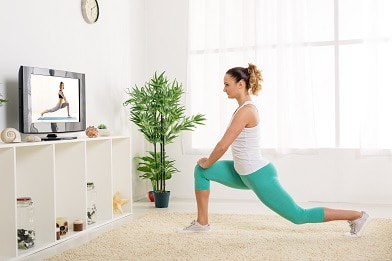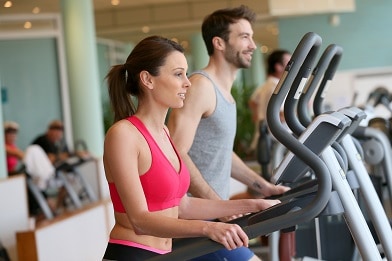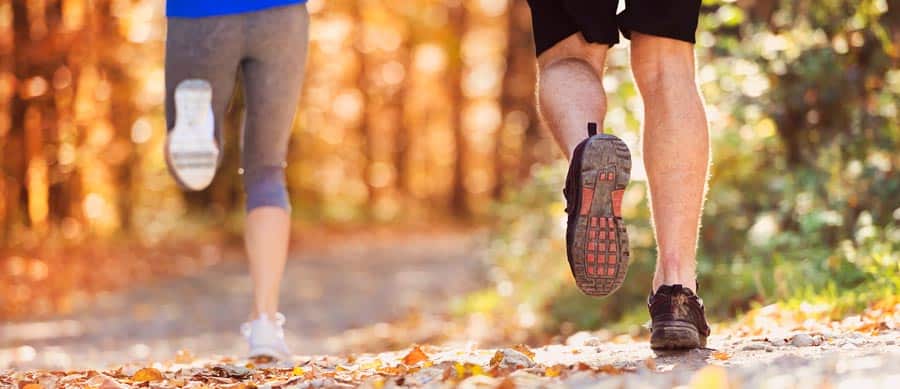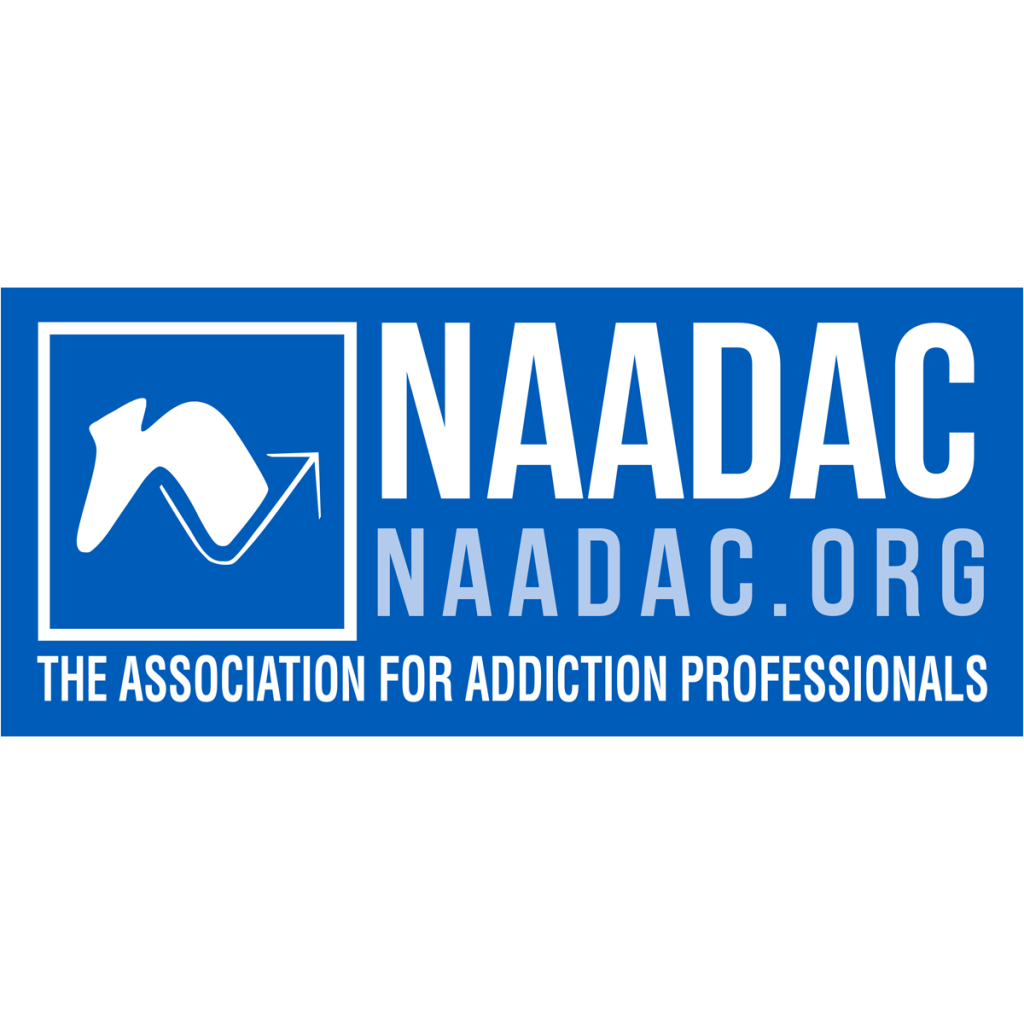Exercise is an important component of addiction recovery. Its benefits are far-reaching and significantly helpful in a number of ways, including helping to improve your mood, combat cravings, reduce stress and heal mind, body and spirit.
Addiction takes a major toll on your physical, mental and spiritual health. An addiction treatment program focuses on restoring these aspects of your health and helping you make important lifestyle changes that promote a life in recovery.
“Exercise is an important component of addiction recovery.”
This is a comprehensive look at the benefits of exercise for those in recovery. This eBook also offers helpful tips to ensure you get enough exercise, get the most out of it, find personal satisfaction in getting a move on and enjoy the many benefits of an active lifestyle.
What are the benefits of exercise in addiction recovery?
A large body of research shows that exercise is beneficial on many fronts, particularly in the early months of recovery. Exercise…
- Improves Your Mood and Overall Mental Health
Exercise promotes the release of endorphin’s, which are the “feel-good” chemicals in your brain. Many people in recovery struggle with occasional feelings of depression and anxiety when giving up drugs or alcohol, and exercise can help.
A recent study by Duke University found that exercising for just a half hour three days a week can reduce feelings of depression as effectively as medication, and it helps ward off the blues for the long-term.1
- Improves Your Self-Esteem
An article published in the Primary Care Companion to The Journal of Clinical Psychiatry cites increased self-esteem and reduced social withdrawal as major benefits of exercise.2
Improving self-esteem and enjoying a healthy social life are central to decreasing tendencies to abuse drugs and alcohol.3 This is because understanding yourself, having a sense of personal value and being able to realistically and non-judgmentally evaluate your strengths and weaknesses—cornerstones of high self-esteem—lead to improved self-efficacy, the ability to ask for help when you need it and a higher level of trust in your own decision-making skills.
- Helps Combat Cravings
Cravings are potent triggers for relapse, and a great deal of attention in treatment is given to strategies that can help relieve them. A recent study by Vanderbilt University found that exercise is a powerful tool for reducing cravings.4 In the study, people who used marijuana heavily were recruited to run on a treadmill five days a week for 30 minutes. After just two weeks, participants enjoyed a 50 percent reduction in cravings. Interestingly, the researchers encountered an unexpected benefit to regular exercise: all of the subjects in the study also decreased their marijuana use as a direct result of exercising.
- Helps You Maintain a Healthy Weight
Good overall health requires a healthy weight. Addiction can lead to severe weight loss or weight gain, and returning to a normal weight during recovery is an important factor in your long-term success. A healthy weight leads to higher self-esteem and better physical health. It improves your energy levels and helps prevent a variety of diseases like diabetes, heart disease and stroke.
Regular exercise is absolutely essential for losing weight or maintaining your current healthy weight. It builds muscle strength to help increase your metabolism, and it burns the excess calories you consume to help prevent weight gain.
- Improves Sleep
Adequate sleep is particularly essential for people in recovery. A lack of sleep affects brain function, reduces feelings of well-being, and leaves you more susceptible to relapse. The National Sleep Foundation cites a recent study that found that people who exercise five days a week for 30 minutes fall asleep more easily, stay asleep longer, enjoy a higher quality of sleep and feel more alert and energized during their waking hours.5
- Reduces Stress
Harvard Medical School points out that exercise immediately reduces levels of the stress hormones cortisol and adrenaline to promote feelings of relaxation and well-being.6
But exercise doesn’t just reduce stress on the spot. According to the National Institute on Drug Abuse, regular exercise can actually reduce your body’s response to stress in general and increase your tolerance for stressful situations for the long-term.7
- Combats Boredom and Promotes Structure
Recovery finds many people with a lot of extra time on their hands—time that was once filled by seeking drugs, taking them and recovering from them. Exercise is a good way to fill some of that time, especially exercise activities that offer enjoyment and camaraderie, such as joining a bowling or baseball league, taking up golfing or heading out into the wilderness to hike, rock climb or kayak.

- Improves Your Memory
Drug abuse and addiction can take a serious toll on your memory and other brain functions. According to Harvard Medical School, regular exercise changes the brain in ways that protect and enhance thinking and memory.8Researchers believe that this is because regular aerobic exercise boosts the size of the hippocampus, the brain region that governs memory and learning. Exercise also stimulates the release of growth factors and reduces insulin resistance and inflammation that can affect the health of existing brain cells and the growth of new ones.
- Fosters Other Healthy Lifestyle Choices
Exercise makes you feel good, and it improves your self-confidence and self-discipline. Harvard Medical School cites a number of far-reaching implications of exercise, including mastery over mind and body and improved self-efficacy in recovery. As you become healthier through exercise and gain muscle or lose weight, you feel stronger and better able cope with the challenges faced in recovery. These feelings of strength and resilience naturally lead you to make other healthy lifestyle choices, such as eating nutritious food and engaging in a higher level of self-care.
“Exercise makes you feel good, and it improves your self-confidence and self-discipline.”
- Improves Your Overall Health and Well-Being
The Centers for Disease Control and Prevention points out that regular exercise is essential for overall good health and a high sense of well-being.9 Regular exercise helps you maintain a healthy weight, reduce high blood pressure, lower your cholesterol, reduce your risk of developing type 2 diabetes, heart disease, cancer and a large number of other conditions and diseases. It also helps you maintain good mental health, another cornerstone of successful recovery.
How much exercise do you need?
The Centers for Disease Control recommends getting 150 minutes of moderate-intensity exercise, such as brisk walking, or 75 minutes of vigorous-intensity exercise, such as running, each week.10 This boils down to a half hour of exercise per day, five days a week. The CDC points out that you don’t have to do your whole half hour all at once. Breaking it down into three ten-minute stretches throughout the day affords the same benefits as doing it all at once, but breaking it up can help you find the time and motivation to get physical.
The CDC also recommends engaging in strength training twice weekly to work all of your major muscle groups and strengthen your core for more effective workouts and better disease and injury prevention.
Three excellent exercises for addiction recovery
There are no proven “best” exercises for people in recovery. Rather, the kinds of exercise you enjoy most are the ones you should focus on engaging in. As long as you’re moving your body for around 150 minutes per week, you will reap the many benefits of exercise. That said, below are three popular exercises that are suited to those in recovery:
“The kinds of exercise you enjoy most are the ones you should focus on engaging in”.
- Dancing:The University of California at Berkeley’s wellness program points to the ways in which dancing can help you in recovery.11 Dancing to your favorite music improves your mood, increases your sense of well-being, bolsters your coping abilities and boosts your self-esteem.
- Swimming: Moving through the water can be highly therapeutic in addition to being a great aerobic exercise. Swimming reduces pain, eases depression and improves sleep quality.12 It’s also a very low-impact activity particularly suited to those with an injury or illness that precludes engaging in higher-impact activities like running.
- Hiking in nature: Hit the hiking trails for a great workout while communing with nature. According to the University of Minnesota’s Center for Spirituality and Healing, being in nature quells feelings of fear and anger, reduces levels of stress hormones, lowers your blood pressure, heart rate, muscle tension and other responses to stress and promotes a sense of calm.13

Exercise as moving meditation
Meditation is quickly becoming a mainstream practice that can help you manage symptoms associated with a wide range of illnesses, including addiction. Simply the act of quieting the mind and focusing your attention on the present moment, meditation doesn’t have to be done in a cross-legged position while chanting. You can meditate anywhere and in any position, and in fact, some exercises are well-suited to focusing the mind on the present and letting conscious thoughts of the past and future fall away.
“Some exercises are well-suited to focusing the mind on the present and letting conscious thoughts of the past and future fall away.”
These meditative exercises can work to improve your overall sense of wellness and promote deeper connections between mind, body and spirit:
Yoga. Yoga is a highly meditative practice that combines movement and breathing, offering a workout that promotes strength, flexibility and balance of both mind and body. Yoga brings your focus into the present moment and puts you in tune with your physical and mental state.
Harvard Medical School points out that yoga mitigates your body’s responses to stress, such as increased heart rate, blood pressure and muscle tension.14 According to an article published in the journal Substance Abuse, yoga is a proven therapy for preventing relapse.15 Practicing yoga in recovery helps you navigate cravings, promotes healthy lifestyle choices and can help you recognize signs of early relapse by strengthening your connection to your mind.
Walking. Going for a long walk can be very meditative if you acknowledge the thoughts that enter your brain and let them float away without holding on to them. Walking lets you focus your attention on your senses, which anchors you in the present. On your walk, listen to nature, feel the sunshine and breeze on your skin, smell the cut grass and witness what’s going on around you.
Working in the Garden. Yard work involves squatting, digging, lifting, hauling and raking, among other modes of physical activity. But it’s also highly meditative. Working in the garden is a mindful activity that lets you focus on your immediate surroundings, nurture living things, and create a peaceful space for enjoying nature, entertaining guests and spending quiet time with your thoughts. Gardening also exposes you to natural daylight that improves your mood and increases your levels of vitamin D, which is essential for good health. If you don’t have space for a garden, consider joining a community garden, creating a balcony garden or helping a friend or elderly neighbor tend to their garden.
How to form good exercise habits, even if you hate exercising
Even if you enjoy exercising, it can be difficult to find the time and motivation to get active. If you don’t particularly enjoy it, trying to develop the motivation to move most days of the week can be frustrating and discouraging. These tips can help you develop good exercising habits even if you’d rather stay on the couch than get a move on.
Choose an activity you enjoy. If you hate jogging, it’ll probably be pretty difficult for you to maintain a regular exercise routine if you limit yourself to that activity. Keep in mind that dancing, working in the yard, taking long walks, going on hikes, engaging in martial arts and joining a sports league are all legitimate forms of exercise. The important thing is to choose activities that you enjoy and make them part of your lifestyle or even incorporate them into your social life.
“The important thing is to choose activities that you enjoy and make them part of your lifestyle.”
Track your progress. If you’re the type of person who likes to map your progress, doing so can help you stay motivated to get your weekly 150 minutes of exercise. A number of products and apps are available to help you do just that. For example, a Fitbit (and other products like it) is a tracking tool you wear on your wrist that counts your daily steps and monitors your sleep. The information is downloaded to your personal dashboard, where you can look at charts of your progress and record your daily food and water intake and log the actual exercises you do.
Likewise, a wide range of apps are available for your phone that map your walking, running or biking route, record distances, speeds and calories burned as well as offer community support and tools to track other aspects of fitness.
Incorporate exercise into your usual daily activities. Any physical activity is good for your body and offers the wide range of benefits of exercise. If you have trouble exercising for exercise’s sake, find ways to incorporate movement into your daily life. For example, walk or bike to the places you need to go, put on some music and dance while you do your housework, do floor exercises during TV commercials or watch your favorite shows or listen to your favorite podcasts while working out on the treadmill. If your mindset, budget and living quarters allow it, you might even consider getting a dog in order to give a higher purpose to a long daily walk.
“Any physical activity is good for your body and offers the wide range of benefits of exercise.”
Stay mindful of the benefits you’re seeing. Once you start seeing the results of exercising, keeping those in mind every day and paying attention to how exercise makes you feel can help motivate you to keep working out. Consider keeping an exercise journal and record your feelings before exercising, recount how you felt during your workout and note the benefits you’re enjoying as a result of getting regular exercise.
Find an exercise buddy. Having an exercise buddy can help you stay motivated, and it gives you the opportunity to help motivate your buddy as well, therefore reinforcing your own will to work out. Whether you join a class together, embark on a daily walk or play a game of tennis or one-on-one basketball, having someone to work out with can help keep you interested in the activity for the duration of the workout while offering a meaningful social encounter, which is another important factor in recovery.

Sign up for a race. If you enjoy running, consider signing up and training for a 5k, 10k or even a half or full marathon. Races offer a concrete goal to work toward, and they give many people a high level of personal satisfaction regardless of their race time.
Exercise makes a difference
Exercise is a powerful component of any recovery plan. Its benefits for mind, body and spirit are clear and proven, and a regular exercise plan can make a big difference in your attitude toward recovery and your motivation for long-term abstinence.
If you’re starting an exercise plan after being inactive for some time, or if you have special health considerations, talk with your doctor before starting an exercise regimen. Then, get out there, move your body and enjoy the physical and mental fruits of your labors as they bring you closer to long-term successful recovery.
At our Austin recovery center, we provide a fitness program for clients in our 90-day residential drug rehab program. Group sessions meet five days a week to promote physical healing, self-love, and improve clients’ overall quality of life. Learn more about our drug rehab in Austin by calling (888) 427-4932 today.






